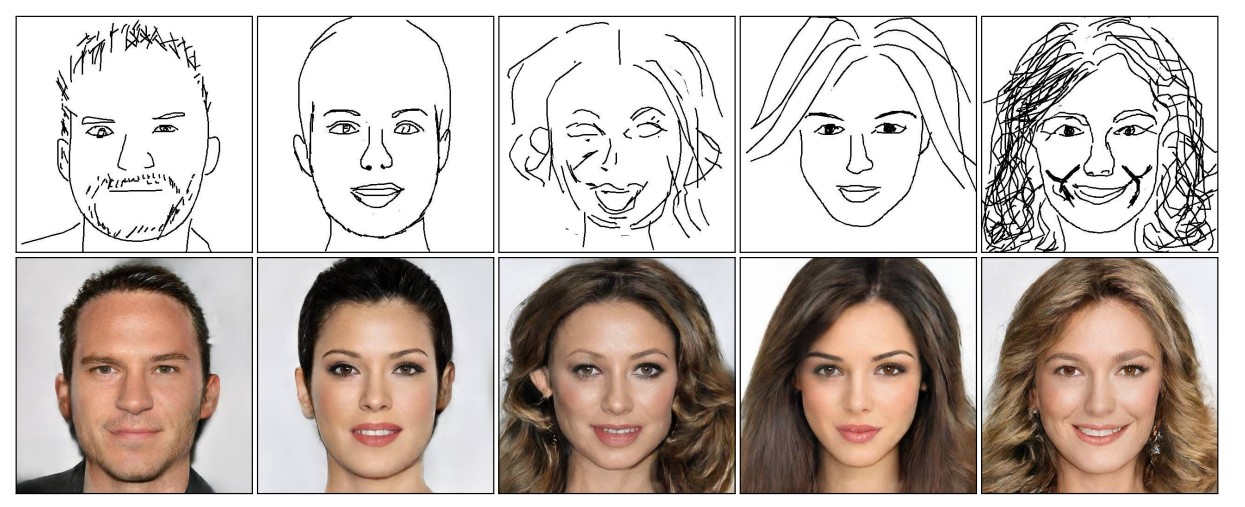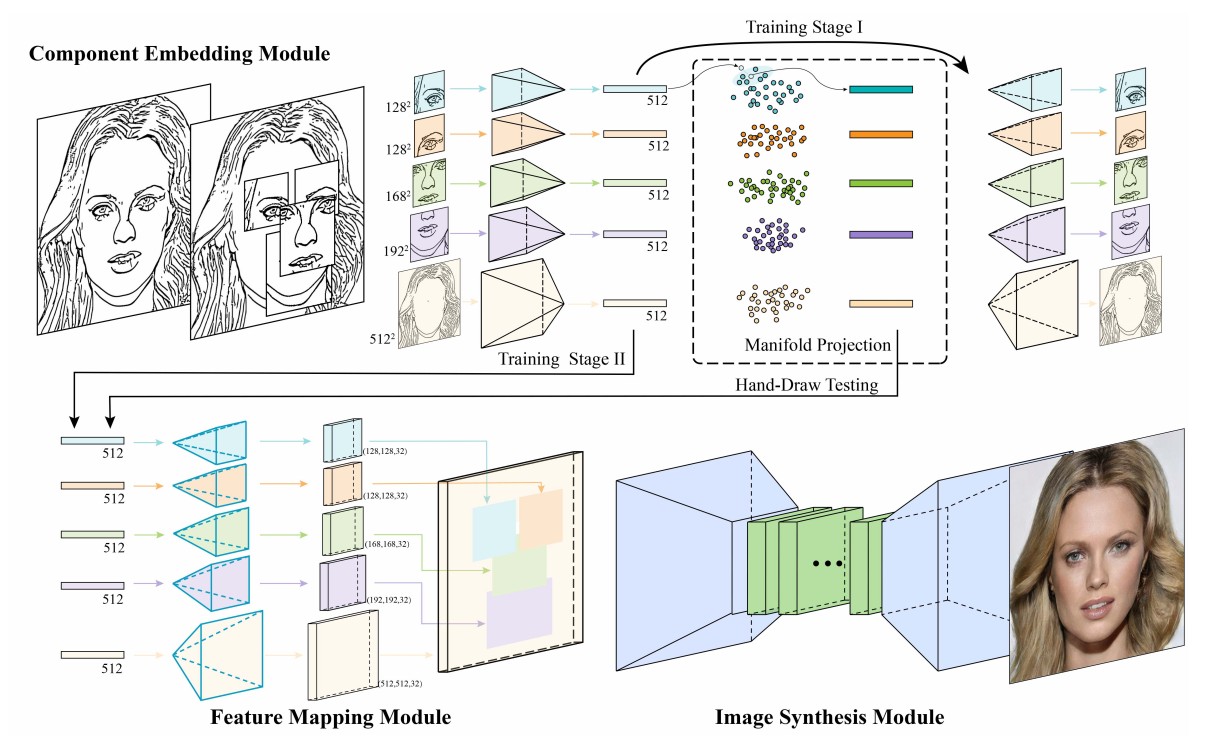It permitted the experienced, and the experts of the field to generate decent looking portraits, and sometimes appealing, but it was still nothing compared to what the world offers now. Nevertheless, on the other hand, the inexperienced and novices just made with it a cluster of flabbergasted nonsense.
However, it did provide great entertainment and was a big hit back in the day.
Fast-forward to 2020, analysts at the Chinese Academy of Sciences and City University of Hong Kong have strived to develop something that many people wished they could back in the era of Etch-A-Sketch.
Named DeepFaceDrawing, the AI creates astonishing and true-to-life sketches from literally anything you throw at it. The requirements to do so? No prior experience, and no expertise at all.

DeepFaceDrawing AI
The active mechanism of DeepFaceDrawing is dependent on a system of probability formulas that help fill in the gaps among eyes, nose, and mouth. The enormous database of facial features provided, help it calculate possibilities as to what goes where.
Apart from DeepFaceDrawing, there have been other similar technologies as well. To name a few, these are pix2pixHD, Lines2FacePhoto, and iSketchNFill, but when a comparison is in place, DeepFaceDrawing seems to be unparalleled.
Shu-Yu Chen, the lead researcher, has said the following about his AI technology and others:
“Recent deep image-to-image translation techniques allow fast generation of face images from freehand sketches. However, existing solutions tend to overfit to sketches, thus requiring professional sketches or even edge maps as input. To address this issue, our key idea is to implicitly model the shape space of plausible face images and synthesize a face image in this space to approximate an input sketch.”
He goes on to add, “Our method essentially uses input sketches as soft constraints, and is thus able to produce high-quality face images even from rough and/or incomplete sketches.”
At the 2020 SIGGRAPH July conference, the team wishes to present a practical demonstration of DeepFaceDrawing. The meeting is held annually on the latest and greatest in the computer field. This time, the conference will be held online, and virtually due to the novel Coronavirus.

AI Module
No doubt about the AI’s aesthetic appeal and amusement, it is also thought to be of providing great use in law enforcement where it could possess the potential to deliver precise, and quick sketches that could prove to be indispensable. Moreover, its set to have a great future in being used as facial recognition tech, medical operations, and as an educational tool as well.
The research team concluded that they would release the following code, shortly in the coming time. See the full report here.